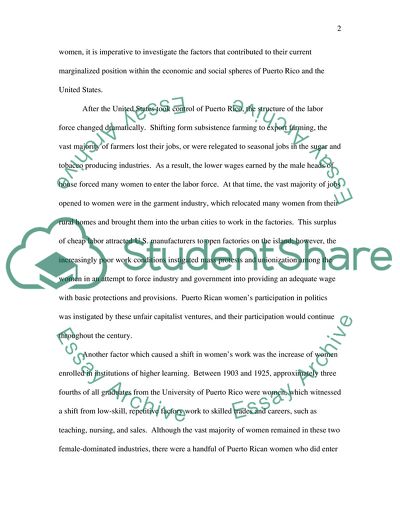Cite this document
(The Position of Puerto Rican Women Essay Example | Topics and Well Written Essays - 1750 words, n.d.)
The Position of Puerto Rican Women Essay Example | Topics and Well Written Essays - 1750 words. https://studentshare.org/politics/1745398-womenthe-economy-and-the-trades
The Position of Puerto Rican Women Essay Example | Topics and Well Written Essays - 1750 words. https://studentshare.org/politics/1745398-womenthe-economy-and-the-trades
(The Position of Puerto Rican Women Essay Example | Topics and Well Written Essays - 1750 Words)
The Position of Puerto Rican Women Essay Example | Topics and Well Written Essays - 1750 Words. https://studentshare.org/politics/1745398-womenthe-economy-and-the-trades.
The Position of Puerto Rican Women Essay Example | Topics and Well Written Essays - 1750 Words. https://studentshare.org/politics/1745398-womenthe-economy-and-the-trades.
“The Position of Puerto Rican Women Essay Example | Topics and Well Written Essays - 1750 Words”. https://studentshare.org/politics/1745398-womenthe-economy-and-the-trades.


